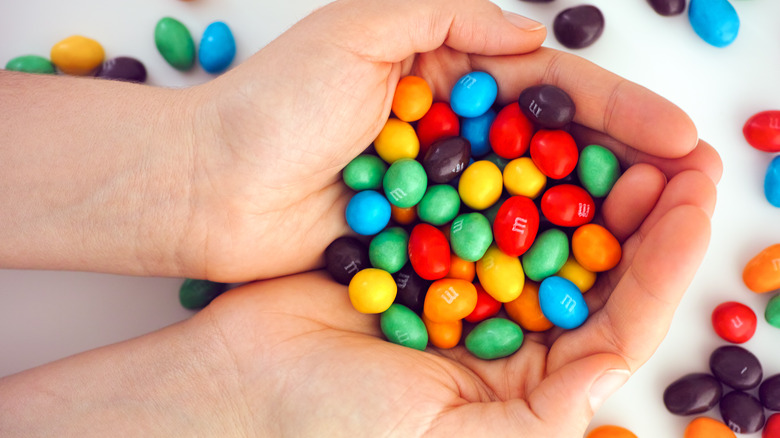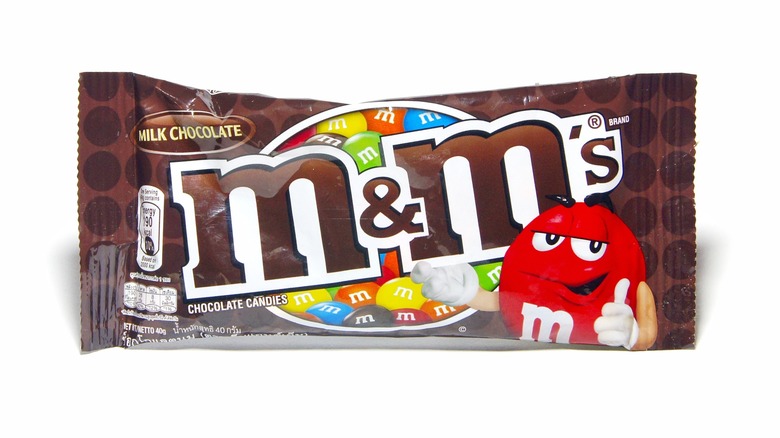The Real Reason M&M's Were Banned In Sweden
M&M's: sweet little chocolate nuggets coated in a colored candy shell. Delicious. Then there's all the varieties: hazelnut, caramel, dark chocolate, and a million others. And don't even get us started on the mini M&M's, which somehow taste even better. You can even order customized colors and designs for special occasions.
Given M&M's status as a candy store staple, we can hardly be surprised that they tend to be at the top of the list when it comes to favorite candies. M&M's actually won 55% of the votes in a Halloween candy survey conducted by RetailMeNot in 2021. A whopping 400 million M&M's are produced in the U.S. on a daily basis to keep up with demand.
While M&M's have dabbled in international flavors such as Mexican jalapeno peanut, Thai coconut peanut, and English toffee peanut (via Delish), the brand isn't available in every country. Sweden, for example, has banned M&M's, but not for the reason you might think.
Not enough room in Sweden for two candies
Although the European Union prompted M&M's manufacturers to replace artificial dyes with natural dyes, according to WBUR, that's not the reason the Swedes don't have access to these little chocolates. It's actually more a case of "this town ain't big enough for the both of us."
At one end of the saloon, you've got the beloved American M&M's. At the other end, you've got Sweden's Marabou chocolates. And both are colorful little candies marked with the letter "m." According to BuzzFeed, Marabou's manufacturer won the trademark battle in 2016. To be fair, Marabou has been in circulation since the 1960s, while M&M's only arrived in Sweden in 2009 (via Delish).
A Swedish court ruled in 2016 that Mars couldn't sell M&Ms with the lowercase "m" letters on the packaging, per CBS News. Today, you can find peanut M&Ms — albeit with capital M's on the packaging — in Swedish grocery stores. But don't expect to find the classic lowercase-letter packaging in the country.

